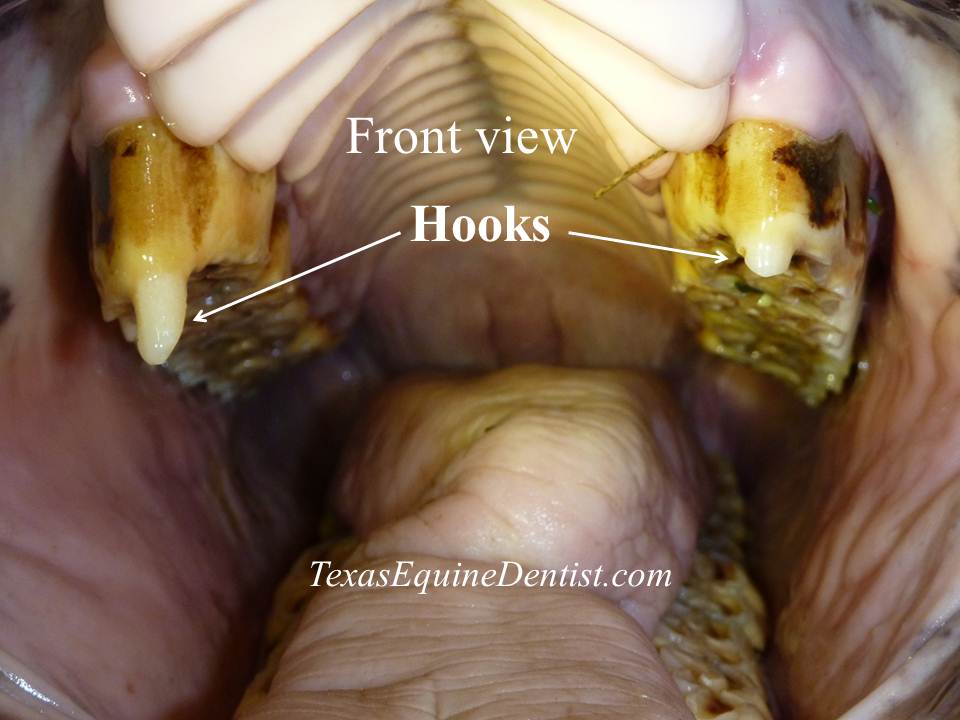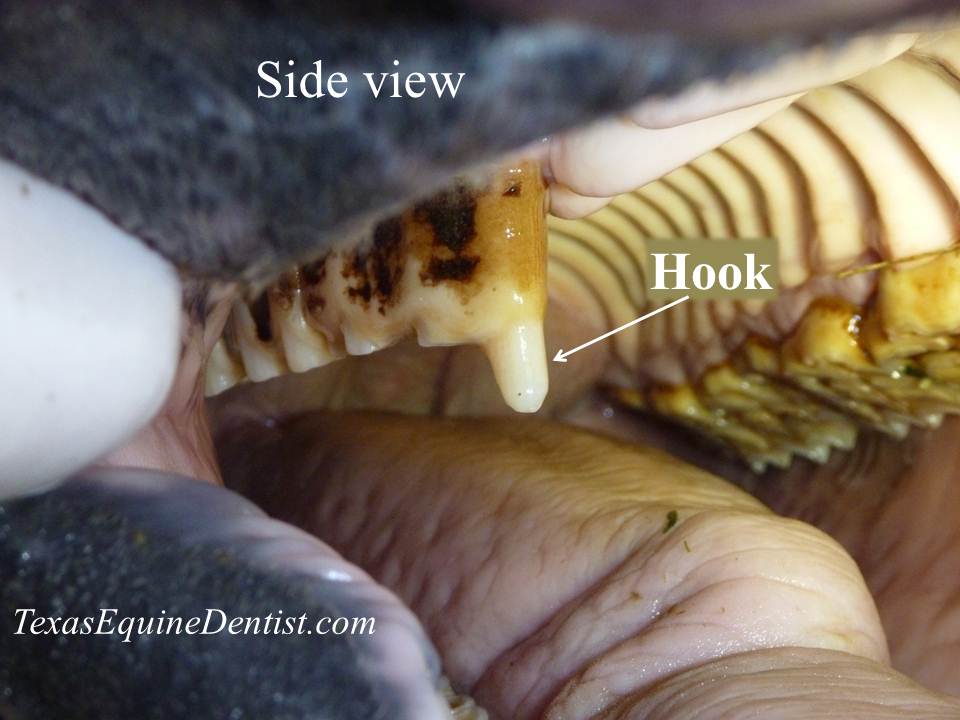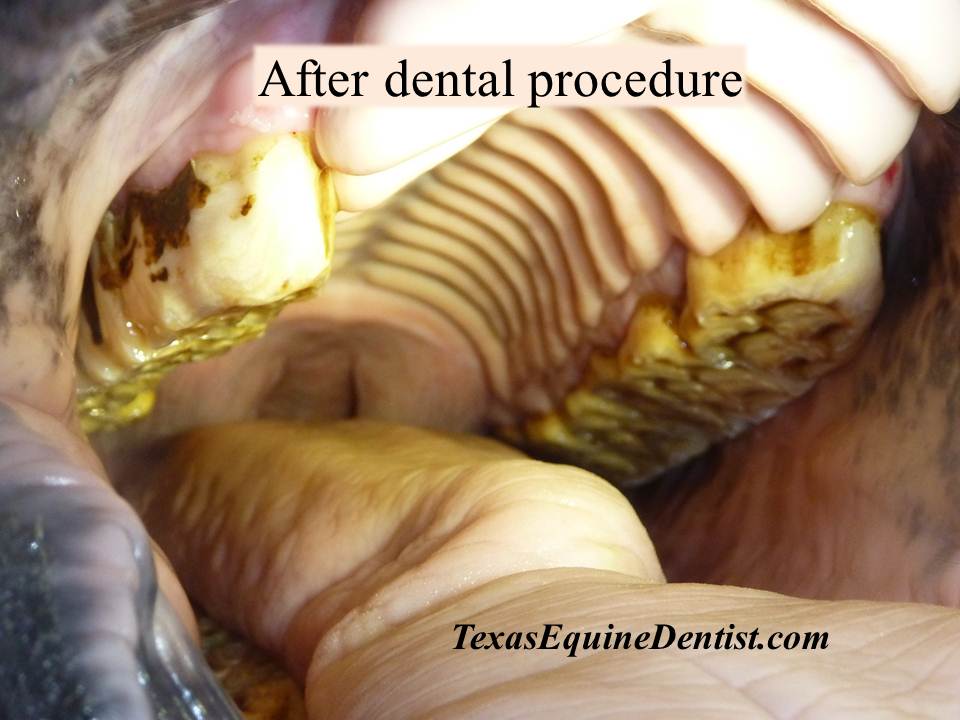These photos are of a 27 year old Arabian gelding. The hook on his upper right first cheek tooth is long and has a very sharp point. These hooks not only interfere with chewing but also contribute to performance issues such as head tossing and not turning or stopping as they should. Horses with hooks on their upper first cheek teeth also have similar hooks on their lower last cheek teeth in the very back of their mouth (not visible in these photos).
The photo below is after floating and equilibration has been completed. Note that the cheek tooth that had the larger hook is still longer than it should be. Aggressive floating can result in opening the pulp of the tooth and cause sensitivity, infection, or permanent damage. For that reason we reduce excessively long teeth in stages. In 4-6 months we can safely shorten this tooth to its proper length and have this guy’s teeth back to normal.
David Warren, D.V.M.



